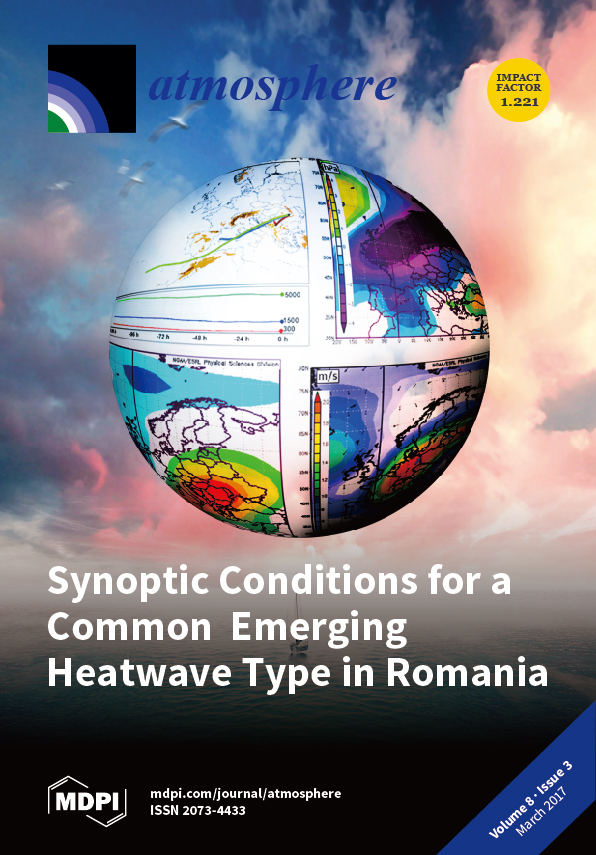Abstract: By analyzing the data of urban air pollutant measurements from 2013 to 2015 in Nanjing, East China, we found that the correlation coefficients between major atmospheric compound pollutants PM
2.5 and O
3 were respectively 0.40 in hot season (June, July
[...] Read more.
Abstract: By analyzing the data of urban air pollutant measurements from 2013 to 2015 in Nanjing, East China, we found that the correlation coefficients between major atmospheric compound pollutants PM
2.5 and O
3 were respectively 0.40 in hot season (June, July and August) and −0.16 in cold season (December, January and February) with both passing the confidence level of 99%. This provides evidence for the inverse relations of ambient PM
2.5 and O
3 between cold and hot seasons in an urban area of East China. To understand the interaction of PM
2.5 and O
3 in air compound pollution, the underlying mechanisms on the inversion relations between cold and hot seasons were investigated from the seasonal variations in atmospheric oxidation and radiative forcing of PM
2.5 based on three-year environmental and meteorological data. The analyses showed that the augmentation of atmospheric oxidation could strengthen the production of secondary particles with the contribution up to 26.76% to ambient PM
2.5 levels. High O
3 concentrations in a strong oxidative air condition during hot season promoted the formation of secondary particles, which could result in a positive correlation between PM
2.5 and O
3 in hot season. In cold season with weak atmospheric oxidation, the enhanced PM
2.5 levels suppressed surface solar radiation, which could weaken O
3 production for decreasing ambient O
3 level with the low diurnal peaks. Under the high PM
2.5 level exceeding 115 μg·m
−3, the surface O
3 concentration dropped to 12.7 μg·m
−3 at noon with a significant inhibitory effect, leading to a negative correlation between PM
2.5 and O
3 in cold season. This observational study revealed the interaction of PM
2.5 and O
3 in air compound pollution for understanding the seasonal change of atmospheric environment.
Full article


